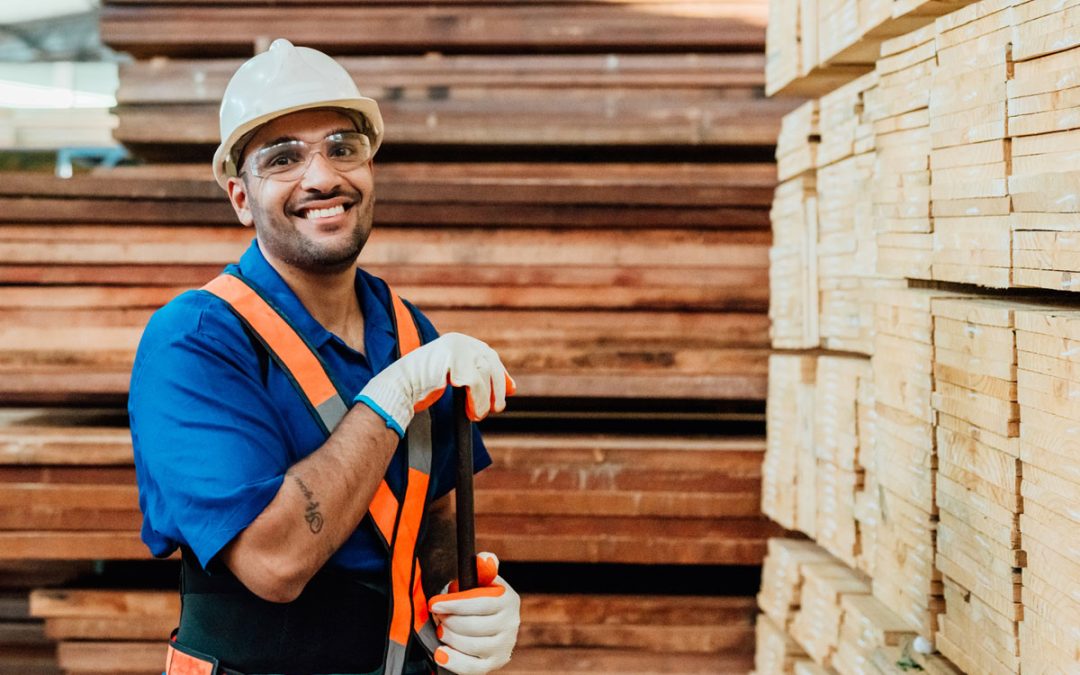Technology
Harassment Fueled by Rite Aid’s Facial Recognition, Says FTC

How Rite Aid’s Facial Recognition Harms Customers and Communities
A report exposes how Rite Aid’s facial recognition system violates privacy rights, discriminates against people of color and women, and fuels harassment and violence.
Introduction: Meet the Author

Picture by: https://commons.wikimedia.org/
Hello, my name is Alex Smith, and I’m a freelance writer and blogger who specializes in technology, law, and social justice. I have been following the developments and controversies surrounding facial recognition for the past few years, and I have written several articles and reports on the topic. I have also interviewed experts, activists, and victims of facial recognition abuse, and I have witnessed firsthand how this technology can impact people’s lives.
In this article, I will share with you some of the shocking findings of a recent report that exposes how Rite Aid, a pharmacy chain that operates in the United States, has been using facial recognition systems in hundreds of its stores since 2017. I will explain how Rite Aid’s facial recognition system, called DeepCam, works, and what are the privacy, security, and ethical issues that it raises. I will also provide you with some practical tips and resources on how to protect yourself and your community from facial recognition surveillance and harassment.
What is Facial Recognition and How Does It Work?
Facial recognition is a technology that matches captured images with other facial images held in databases or on government watchlists. It uses artificial intelligence (AI) algorithms to analyze the shape, size, and features of a person’s face, such as the distance between the eyes, the width of the nose, or the shape of the chin. Facial recognition can be used for various purposes, such as unlocking smartphones, verifying identities, tagging photos, or finding missing persons.
However, facial recognition can also be used for more sinister purposes, such as tracking, profiling, spying, or targeting people based on their appearance, behavior, or location. Facial recognition can be deployed in various ways, such as through cameras, smartphones, drones, or wearable devices. Facial recognition can also be integrated with other technologies, such as biometrics, geolocation, or social media, to create a more comprehensive and invasive picture of a person’s identity, activities, and preferences.
One of the most advanced and controversial facial recognition systems in the world is DeepCam, developed by a company called Clarifai. DeepCam uses deep learning algorithms to analyze faces, which means that it can learn from large amounts of data and improve its accuracy and performance over time. DeepCam claims to be able to recognize faces in any lighting, angle, or expression, and to be able to distinguish between identical twins, masks, or makeup. DeepCam also claims to be able to detect emotions, age, gender, ethnicity, and even health conditions from a person’s face.
How Does Rite Aid Use DeepCam and Why?
Rite Aid is a pharmacy chain that operates in the United States, with over 2,000 stores across 19 states. Rite Aid has deployed DeepCam in hundreds of its stores since 2017, without informing or obtaining consent from its customers or employees. Rite Aid claims that it uses DeepCam for security purposes, such as preventing theft, protecting staff and customers from violence, and verifying identities.
According to Rite Aid, DeepCam works by scanning the faces of everyone who enters its stores and comparing them with a database of known or suspected criminals, such as shoplifters, robbers, or violent offenders. If DeepCam detects a match, it alerts the store manager, who can then decide whether to confront, ban, or report the person to the authorities. Rite Aid also claims that DeepCam can help identify customers who are eligible for discounts, rewards, or special offers, based on their loyalty or purchase history.
However, Rite Aid’s use of DeepCam has been criticized by many experts, activists, and customers, who argue that it violates privacy rights, discriminates against people of color and women, and fuels harassment and violence. In the next sections, I will explain some of the main issues and concerns that Rite Aid’s facial recognition system raises, and how it impacts the lives of customers and communities.

Picture by: https://dealmama.com/
What are the Privacy Concerns of Rite Aid’s Facial Recognition System?
One of the most serious concerns of Rite Aid’s facial recognition system is that it violates the privacy rights of customers and employees, who are not informed or given a choice about the collection and use of their biometric data. Biometric data refers to the unique physical characteristics of a person, such as their face, fingerprints, iris, or voice. Biometric data is considered to be sensitive and personal information, as it can reveal a person’s identity, health, emotions, or preferences.
Rite Aid’s facial recognition system collects biometric data of customers and employees without their consent, and stores it in a database that can be accessed by Rite Aid, Clarifai, or third parties, such as law enforcement agencies, advertisers, or hackers. Rite Aid does not disclose how long it keeps the biometric data, or how it protects it from unauthorized access or misuse. Rite Aid also does not provide any way for customers or employees to opt out, delete, or correct their biometric data, or to challenge any decisions or actions that are based on it.
This means that Rite Aid’s facial recognition system can be used to identify, track, profile, or target customers or employees without their knowledge or permission, and potentially expose them to various risks, such as identity theft, fraud, stalking, harassment, or discrimination. For example, Rite Aid’s facial recognition system could be used to:
- Monitor the shopping habits, preferences, or health conditions of customers or employees, and use this information to manipulate their behavior, influence their choices, or sell them products or services that they do not need or want.
- Share the biometric data of customers or employees with third parties, such as law enforcement agencies, advertisers, or hackers, who could use it for their own purposes, such as surveillance, profiling, or targeting.
- Misidentify customers or employees as criminals or suspects, and subject them to false accusations, arrests, or violence.

Picture by: https://www.ftc.gov/policy
What are the Technical Vulnerabilities of Rite Aid’s Facial Recognition System?
Another major concern of Rite Aid’s facial recognition system is that it is vulnerable to technical errors, glitches, or attacks, that could compromise its accuracy, reliability, or security. Rite Aid’s facial recognition system relies on complex and opaque algorithms that are not transparent, accountable, or auditable, and that can be affected by various factors, such as lighting, angle, expression, or quality of the images. Rite Aid’s facial recognition system also depends on the quality and integrity of the data that it uses, such as the database of criminals or suspects, or the loyalty or purchase history of customers.
This means that Rite Aid’s facial recognition system can be spoofed, manipulated, or hacked by malicious actors, who could use fake images, masks, or software to impersonate someone else, or to alter or delete the biometric data of customers or employees. This could lead to various consequences, such as:
- Identity theft, fraud, or impersonation: Someone could use a fake image, mask, or software to trick Rite Aid’s facial recognition system into thinking that they are someone else, and gain access to their personal information, accounts, or benefits.
- Stalking, harassment, or violence: Someone could use a fake image, mask, or software to evade Rite Aid’s facial recognition system, and enter the store without being detected, and harass, threaten, or harm customers or employees.
- False accusations, arrests, or lawsuits: Someone could use a fake image, mask, or software to frame someone else as a criminal or suspect, and cause them to be falsely accused, arrested, or sued by Rite Aid or the authorities.
What are the Bias Issues of Rite Aid’s Facial Recognition System?
The most disturbing concern of Rite Aid’s facial recognition system is that it is biased and discriminatory, especially against people of color, women, children, and the elderly. Rite Aid’s facial recognition system uses DeepCam, which is based on deep learning algorithms that learn from large amounts of data. However, this data can be skewed, incomplete, or inaccurate, and reflect the biases, prejudices, or stereotypes of the people who collect, label, or use it.
This means that Rite Aid’s facial recognition system can be racially biased and inaccurate, and misclassify people of color, women, children, and the elderly more often than white men. Studies have shown that some facial analysis algorithms misclassify Black women nearly 35 percent of the time while nearly always getting it right for white men. This means that people of color are more likely to be misidentified as criminals or suspects than white people when using face surveillance technology like DeepCam.
This also means that Rite Aid’s facial recognition system can be used to target and harass people of color, women, children, and the elderly, who are already marginalized and vulnerable in society. Rite Aid’s facial recognition system can be used to:
- Exclude, isolate, or intimidate people of color, women, children, and the elderly, who may feel unwelcome, unsafe, or uncomfortable in Rite Aid’s stores, and avoid shopping there or working there.
- Profile, monitor, or criminalize people of color, women, children, and the elderly, who may be subjected to more scrutiny, suspicion, or intervention by Rite Aid or the authorities

Picture by: https://www.newsbreak.com/
How to Protect Yourself and Your Community from Rite Aid’s Facial Recognition System?
As you can see, Rite Aid’s facial recognition system poses serious threats to the privacy, security, and dignity of customers and employees, especially people of color, women, children, and the elderly. However, there are some ways that you can protect yourself and your community from Rite Aid’s facial recognition surveillance and harassment. Here are some tips and resources that you can use:
- Avoid or boycott Rite Aid’s stores that use facial recognition. You can find out which stores use facial recognition by using this map created by the investigative journalists who exposed Rite Aid’s facial recognition program. You can also use this app to scan the barcode of any product and see if it is sold by Rite Aid or any other company that uses facial recognition. You can also support alternative pharmacies that respect your privacy and do not use facial recognition, such as CVS or Walgreens.
- Cover or disguise your face when entering Rite Aid’s stores that use facial recognition. You can use masks, sunglasses, hats, scarves, or makeup to hide or alter your facial features and prevent Rite Aid’s facial recognition system from recognizing you. You can also use special accessories, such as these glasses or this hat, that can reflect or block the infrared light that facial recognition cameras use to capture your face. You can also use this app to generate realistic-looking fake faces that you can use as your profile picture or avatar online.
- Educate yourself and others about the dangers and harms of facial recognition. You can read more about the issues and impacts of facial recognition on this website or this blog. You can also watch these videos or listen to these podcasts that explain how facial recognition works and why it is problematic. You can also share this article or any other relevant information with your friends, family, or social media followers, and raise awareness about Rite Aid’s facial recognition system and its consequences.
- Join or support the movements and campaigns that oppose facial recognition. You can sign this petition or this letter that demand Rite Aid to stop using facial recognition in its stores. You can also join or donate to these organizations or these coalitions that are fighting against facial recognition and advocating for privacy and civil rights. You can also contact your local, state, or federal representatives and urge them to pass laws or regulations that ban or limit the use of facial recognition by corporations or governments.
Conclusion: Take Action Now
Rite Aid’s facial recognition system is a clear example of how facial recognition technology can be used to violate privacy rights, discriminate against people of color and women, and fuel harassment and violence. Rite Aid’s facial recognition system is not only unethical, but also illegal, as it violates several state and federal laws that protect biometric data, consumer rights, and human dignity. Rite Aid’s facial recognition system is also unnecessary, as there are other, more effective and less invasive ways to ensure security and customer satisfaction.
Therefore, I urge you to take action now and protect yourself and your community from Rite Aid’s facial recognition system. You can avoid or boycott Rite Aid’s stores that use facial recognition, cover or disguise your face when entering them, educate yourself and others about the dangers and harms of facial recognition, and join or support the movements and campaigns that oppose facial recognition. By doing so, you can help stop Rite Aid’s facial recognition system and make a difference for yourself and your community.
Technology
How to Launch a Successful ICO: Step-by-Step Guide

Introduction
Launching a successful Initial Coin Offering (ICO) requires more than just a promising concept it demands strategic planning, strong technical execution, regulatory compliance, and a compelling value proposition for investors. The process of transforming an innovative blockchain idea into a fully developed token launch is complex and structured. It involves several crucial stages, including conceptualization, market analysis, whitepaper creation, smart contract development, and marketing strategy execution.
Each step plays a defining role in ensuring the ICO gains traction and credibility among investors. Partnering with a professional ICO development company can simplify this process by providing the necessary expertise, technology stack, and compliance knowledge required to navigate the competitive crypto landscape. This guide provides a comprehensive roadmap, taking you through each essential phase of ICO development from ideation to successful token launch, offering clarity, insights, and practical steps to help you achieve your fundraising goals.
Conceptualization and Market Research
The first step toward any successful ICO is the conceptualization phase, where your vision takes form. This involves outlining the project’s goals, identifying its target market, and understanding the existing blockchain landscape.
A well-researched concept defines the foundation for the entire ICO journey. By identifying pain points, analyzing competitors, and determining user needs, you establish a direction that resonates with both investors and the crypto community. A clearly defined concept ensures the project stands out and offers real-world utility rather than just being another token in circulation.
- Define Your Project’s Vision and Goals: Clearly articulate what your project seeks to achieve and the pain points it addresses in the blockchain ecosystem. The project’s goals must align with market needs and demonstrate long-term viability.
- Conduct Market and Competitor Analysis: Detailed research helps in understanding the target audience, existing competitors, and the gaps your project can fill. It allows you to position your ICO effectively in a crowded marketplace.
- Identify Target Users and Investors: Knowing who your potential investors and end-users are allows you to shape your communication strategy, tokenomics, and overall business model around their interests.
- Develop a Strong Use Case: A token must have a genuine use case to sustain its demand post-launch. Whether it’s utility, governance, or security, your token’s function should add measurable value to the ecosystem.
Creating the Whitepaper
A whitepaper serves as the official document that represents your project to potential investors. It is not just a technical explanation—it’s a strategic tool that defines your goals, value proposition, and the roadmap to achieving them. A well-written whitepaper builds credibility and attracts attention from the investment community.
It must explain how your solution differentiates itself, highlight your token’s functionality, and provide transparency regarding its structure and future prospects. This document forms the foundation for investor trust, making accuracy, clarity, and depth absolutely essential.
- Outline the Project’s Vision and Problem Statement: The whitepaper should start by presenting the problem your project intends to solve and the innovative solution you propose through blockchain technology.
- Detail the Technical Architecture: Explain the technological framework, protocols, and smart contract mechanisms behind your project. This section builds trust by showcasing the technical competence of your team.
- Design a Comprehensive Tokenomics Model: Token distribution, supply, and utility should be defined clearly. Investors are drawn to well-structured models that ensure fairness and long-term sustainability.
- Include Legal and Compliance Information: Addressing regulatory frameworks and investor protection measures instills confidence. Compliance demonstrates that your ICO adheres to best practices and international standards.
Smart Contract Development and Token Creation
This phase focuses on the technical execution of your ICO. Smart contracts are the backbone of the token ecosystem they automate processes, manage transactions, and ensure transparency. A secure and functional smart contract not only builds investor confidence but also eliminates manual errors and fraud.
Token creation involves selecting the right blockchain platform, determining token standards, and deploying verified code. Every decision made in this stage has long-term implications on performance, scalability, and token value. Security audits and testing ensure your token operates flawlessly upon launch.
- Select the Appropriate Blockchain Platform: Choosing the right blockchain (Ethereum, Binance Smart Chain, Solana, or Polygon) depends on scalability, transaction cost, and ecosystem compatibility.
- Develop Secure Smart Contracts: Smart contracts should be coded, tested, and audited rigorously to eliminate vulnerabilities. Security audits are essential to protect investor funds and project reputation.
- Implement Token Standards: Depending on the use case, select token standards such as ERC-20, ERC-721, or BEP-20. Each standard offers unique functionalities for utility, governance, or NFT-based models.
- Conduct Thorough Testing and Auditing: Before deployment, every function of the smart contract should undergo comprehensive testing on testnets to ensure reliability and prevent any future exploitation.
Legal Compliance and Regulatory Framework
Legal compliance forms the protective layer around your ICO project. It ensures that your operations align with national and international regulations, preventing legal disputes and maintaining investor trust.
Understanding the legal environment of your target markets is vital for protecting both your company and participants. Elements like token classification, data protection, and KYC/AML compliance must be meticulously handled. Legal advisors play a crucial role in ensuring your ICO follows appropriate frameworks, avoiding costly mistakes that can delay or jeopardize your project launch.
- Determine Legal Jurisdiction and Structure: Identify the most suitable country for your ICO based on favorable crypto regulations, tax benefits, and investor laws. Some countries are more supportive of blockchain-based fundraising than others.
- Ensure KYC and AML Procedures: Implementing Know Your Customer (KYC) and Anti-Money Laundering (AML) policies ensures that your ICO operates transparently and prevents fraudulent participation.
- Engage Legal Advisors: Consulting legal professionals with experience in blockchain and securities law helps ensure that your ICO meets global regulatory standards.
- Maintain Transparency in Token Sale: Providing clear information about token allocation, lock-up periods, and fundraising caps helps establish credibility with investors.
ICO Website and Dashboard Development
Your ICO website serves as the digital face of your project and the first impression for potential investors. A well-designed website communicates credibility, professionalism, and purpose.
It must highlight your project’s goals, roadmap, whitepaper, and key features in a way that is both informative and visually engaging. The investor dashboard, meanwhile, acts as a secure platform for token purchases, user verification, and sale tracking. An effective website and dashboard combination enhances user experience and builds trust among participants.
- Design a High-Quality Website: The website should effectively communicate your project’s mission, roadmap, and token details. A sleek design and responsive interface enhance investor engagement.
- Develop a Secure Investor Dashboard: The dashboard allows investors to register, verify identities, and purchase tokens securely. Integration of real-time updates enhances transparency and trust.
- Integrate Wallet Support: Multi-wallet integration enables investors to participate using different cryptocurrencies. This flexibility attracts a broader investor base.
- Add Detailed Analytics and Reporting Tools: Providing transparent statistics, token sale progress, and transaction records builds investor confidence and fosters transparency.
Marketing and Community Building
Marketing is the engine that drives visibility and engagement for your ICO. It bridges the gap between your technical product and your target audience. Effective marketing ensures your project gains attention, builds credibility, and fosters a loyal community.
Strategies like PR campaigns, influencer partnerships, and targeted social media promotion help establish authority in the blockchain industry. Meanwhile, active community engagement encourages participation and strengthens your project’s long-term growth. Transparent communication and regular updates are vital for keeping investors informed and motivated.
- Develop a Strategic Marketing Plan: Create a timeline covering pre-ICO, active sale, and post-ICO phases, focusing on both organic and paid channels for maximum reach.
- Utilize PR, Influencer, and Social Media Campaigns: Partnering with reputable influencers and publishing in major crypto outlets increases credibility and exposure.
- Engage Through Community Channels: Telegram, Discord, Reddit, and Twitter communities allow direct engagement with potential investors, fostering trust and long-term relationships.
- Publish Regular Updates and Announcements: Consistent communication about milestones and partnerships keeps the community informed and builds investor confidence.
Token Sale Management
The token sale phase is where your preparation turns into results. Managing this stage effectively ensures smooth transactions, investor satisfaction, and transparent fund allocation. A structured sale process that includes multiple rounds of private, pre-sale, and public creates momentum and trust.
Transparency in tracking token sales, secure payment systems, and real-time analytics make the investment process seamless. The token sale phase must also focus on building post-sale engagement, helping investors remain active stakeholders in your ecosystem beyond the initial purchase.
- Define Clear Sale Stages: Structuring the token sale into private, pre-sale, and public rounds allows for gradual funding and community participation.
- Implement Secure Payment Gateways: Investors should have a seamless experience when purchasing tokens through various cryptocurrencies or fiat options.
- Set Realistic Hard and Soft Caps: Establishing transparent funding goals prevents investor skepticism and sets clear expectations for project growth.
- Provide Real-Time Sale Monitoring: Offering live updates during the sale fosters transparency and encourages further participation.
Post-ICO Activities and Exchange Listing
Post-ICO activities are where your project transitions from fundraising to real-world application. This stage focuses on fulfilling promises made during the ICO phase, maintaining community engagement, and establishing token liquidity. Listing your token on major exchanges ensures trading availability and builds long-term market value.
Post-launch, consistent communication, ongoing development updates, and transparent reporting reinforce investor confidence. This is the time to deliver on milestones, strengthen partnerships, and evolve the project into a sustainable blockchain solution.
- Exchange Listing and Liquidity Management: Listing tokens on reputable exchanges increases liquidity and accessibility for investors, contributing to sustained demand.
- Ongoing Community Support and Updates: Maintaining active communication with token holders ensures continued engagement and project growth.
- Implement Post-ICO Development Roadmap: Focus on product development milestones outlined in the whitepaper to deliver on your project’s promises.
- Ensure Continuous Compliance and Reporting: Regular audits, legal updates, and transparent operations strengthen investor trust and project legitimacy.
Conclusion
Developing and launching an ICO is a multifaceted process that demands technical expertise, legal understanding, and strategic execution. From shaping a compelling concept to building trust through transparent operations, every phase plays a vital role in achieving a successful token launch. With blockchain technology evolving rapidly, aligning with an experienced ICO development company can be the key differentiator that turns a promising idea into a thriving, investor-backed project. A structured approach, guided by professionals and backed by clear communication, ensures your ICO not only attracts capital but also creates long-term value in the blockchain ecosystem.
Technology
Top Fintech App Development Strategies for Growth

Introduction
The financial technology landscape is evolving faster than ever, and businesses that want to thrive must adopt smarter, more innovative approaches to app development. Today’s fintech users expect speed, transparency, personalization, and absolute security all delivered through a clean, intuitive digital experience.
With global trends shifting toward mobile-first financial services, competition is intense and only the best-designed fintech solutions manage to stand out. Developing a successful fintech product requires strategic planning, advanced technology integration, and a deep understanding of user needs.
Understanding What Users Expect
In the fintech ecosystem, user expectations shape the foundation for any high-performing application. Consumers now prefer mobile solutions for banking, investing, budgeting, lending, and payments because they offer unmatched convenience. They want apps that operate seamlessly, handle transactions quickly, and present information clearly.
Any friction slow load times, complex navigation, or unclear features can drive users away. Financial technology brands must therefore prioritize user-centric design, making every step of the digital journey as intuitive and efficient as possible.
Building a Strong Product Strategy
A winning fintech app starts with a strong conceptual foundation. Before any coding begins, businesses should identify clear goals, define target users, and study market competition. Understanding what differentiates your solution from others is crucial.
Whether you aim to simplify peer-to-peer payments, streamline budgeting, or innovate in digital investments, your product must address a real user pain point. Early planning also helps determine the right tech stack, security tools, and features needed to bring the product vision to life. This is especially important in the rapidly evolving world of fintech app development, where trends and user demands shift quickly.
Prioritizing Security and Compliance
Security is one of the most critical components of fintech app success. Users are trusting the app with sensitive data, including personal details, bank accounts, and financial transactions. Any breach can not only lead to data loss but also destroy the brand’s reputation.
To stay compliant and secure, fintech apps must incorporate multi-factor authentication, end-to-end encryption, biometric verification, and real-time fraud detection tools. Compliance with regulations such as GDPR, PCI DSS, and regional banking standards also ensures lawful operations. When users feel secure, they are far more likely to remain loyal and recommend the app to others.
Choosing the Right Technology Stack
The technology stack used in building a fintech app greatly affects its scalability, performance, and long-term flexibility. For backend systems, languages like Java, Python, and Node.js are preferred due to their stability and robustness. For front-end development, frameworks like React Native and Flutter offer cross-platform capabilities, reducing cost and development time.
Cloud computing platforms such as AWS, Azure, or Google Cloud help achieve strong data storage, high uptime, and efficient scaling as the user base grows. Partnering with an experienced fintech app development company also helps ensure that the technology stack is modern, scalable, and aligned with the app’s long-term vision.
Integrating AI and Machine Learning
AI and machine learning are transforming how fintech apps operate. These technologies enhance user experience by offering personalized insights, predictive analytics, and smarter financial recommendations. For instance, budgeting apps can analyze spending habits and provide alerts or suggestions tailored to each user.
AI also helps automate processes like fraud detection, credit scoring, and investment optimization. Machine learning algorithms can monitor suspicious activity patterns and instantly notify users or block transactions. These features not only boost efficiency but also create a more intelligent, adaptive user experience.
Creating Exceptional User Experiences (UX/UI)
Fintech apps must strike a perfect balance between simplicity and functionality. Users want access to powerful financial tools, but they don’t want to be overwhelmed with complex interfaces. Clean layouts, clear typography, and well-structured menus make apps easy to navigate. Micro-interactions such as visual feedback when buttons are tapped enhance usability and guide users intuitively.
Thoughtful UX reduces drop-off rates and encourages long-term usage. In addition, accessibility features like dark mode, large text options, and voice assistance ensure a broader range of users can comfortably interact with the app.
Enhancing Performance with API Integrations
APIs (Application Programming Interfaces) are essential for building sophisticated fintech experiences. They allow apps to communicate smoothly with banking systems, payment processors, investment platforms, identity verification tools, and more. For example, apps can integrate APIs for real-time currency exchange rates, instant KYC verification, or secure payment processing.
Strong API architecture ensures stability, faster transactions, and seamless cross-platform functionality. This significantly boosts the app’s performance and helps businesses deliver richer financial features without developing every component from scratch.
Implementing Scalable Architecture
Fintech apps often experience unpredictable growth patterns—especially during peak financial cycles. To support increasing user demand, the app architecture must be scalable from day one. Microservices are a popular choice because they allow developers to break the app into smaller components that can be scaled independently.
This means the app can handle traffic spikes smoothly without crashing. Scalability ensures long-term growth, reduces downtime, and improves user satisfaction, which is essential for maintaining a strong reputation in a competitive market.
Leveraging Data Analytics for Growth
Data is one of the most powerful assets in fintech. By analyzing user activity, spending behavior, session duration, and engagement patterns, businesses can uncover insights that drive app improvements. Analytics tools help identify which features users love, which ones they ignore, and where they struggle. This information guides updates, feature enhancements, and strategic decisions.
Data also supports personalized marketing efforts, enhancing retention and user loyalty. A data-driven approach ensures that the app continuously evolves and becomes smarter over time.
Building Customer Trust Through Transparency
Trust is the backbone of any financial service. Fintech companies must communicate clearly and openly with their users. Transparent pricing, easy-to-understand terms, and instant customer support strengthen that trust.
Offering detailed transaction histories, spending breakdowns, and helpful notifications keeps users in control of their finances. Customer trust also grows when users feel that their concerns are addressed promptly through efficient support channels. Transparent communication builds relationships and encourages positive reviews and referrals.
The Future of Fintech Growth
As digital finance continues to expand, fintech apps will play an even more central role in people’s financial lives. Innovations like blockchain, decentralized finance (DeFi), embedded finance, and biometric security will shape the next generation of financial products. Businesses that embrace these changes will stay ahead of the curve and capture more users in a competitive market.
Ultimately, growth in fintech requires a strong mix of strategic planning, innovation, security, and user-focused design. By adopting these strategies, companies can build powerful financial tools that deliver real value, drive long-term engagement, and meet the evolving demands of global users. This forward-thinking approach ensures sustained success in the ever-changing world of finance application development.
Real Estate
Modern Lumber Skills Shaping High-Precision Material Planning

Introduction
In today’s construction and woodworking industries, precision is more important than ever. Modern lumber skills are transforming the way materials are planned, measured, and utilized. From small-scale woodworking projects to large construction sites, the ability to plan materials accurately reduces waste, saves costs, and ensures higher-quality results. High-precision material planning is no longer just a skill—it is a necessity for professionals who want to stay competitive. This article explores the role of modern lumber skills in shaping efficient, accurate, and innovative material planning practices.
The Evolution of Lumber Skills
Lumber skills have come a long way from traditional carpentry techniques. In the past, woodworkers relied heavily on manual measurements and experience to plan materials. While craftsmanship was impressive, there were limitations in accuracy and efficiency.
With modern techniques and technologies, the focus has shifted toward precision. Professionals now combine traditional knowledge with digital tools, advanced machinery, and innovative planning methods. These modern lumber skills allow for better estimation of material requirements, accurate cutting, and optimized project workflows.
Rise of Modern Lumber Skills
As the construction industry grows and projects become more complex, the demand for modern lumber skills has increased. Builders need more precise planning to manage materials efficiently and reduce waste. Traditional methods of estimating and cutting lumber are no longer enough. Modern skills, combined with technology and training, allow workers and contractors to plan materials accurately, making construction projects faster, safer, and more cost-effective. This rise in skill demand reflects the need for higher standards in today’s building practices.
Why High-Precision Material Planning Matters
High-precision material planning is essential for several reasons. First, it reduces waste. Accurate measurements mean fewer mistakes, fewer discarded materials, and a smaller environmental footprint. Second, it saves money. By planning materials efficiently, contractors and woodworkers minimize unnecessary purchases, reducing project costs. Third, it improves project timelines. Proper planning ensures that materials are available when needed, preventing delays.
In addition, precision planning enhances the final quality of the project. Structures, furniture, and wooden components fit perfectly, resulting in better aesthetics and durability. Modern lumber skills make this level of accuracy possible.
Benefits of Modern Lumber Skills
Modern lumber skills bring many benefits to construction projects. They help reduce waste by ensuring that materials are cut and used accurately. These skills also save time, as workers can plan and execute tasks more efficiently. Contractors can better predict costs, making budgeting easier and more reliable. Improved material planning also enhances project quality, as the right materials are available when needed. Overall, these skills lead to smoother workflows, lower costs, and stronger, more precise construction results.
Role of Modern Lumber Skills
The main role of modern lumber skills is to improve the accuracy and efficiency of material planning. Skilled workers use knowledge of wood types, cutting techniques, and measurement methods to plan projects carefully. They work with estimators and project managers to ensure the right materials are ordered and used correctly. Modern skills also involve using tools and software to calculate waste, compare cost options, and organize supplies. Essentially, these skills act as a bridge between planning and execution, helping construction teams achieve high-precision results.
The Importance of Precision in Lumber Work
High-precision material planning is not just for big factories. Even small woodworking projects benefit when measurements are accurate and planning is thorough. Precision helps in cutting the exact amount of wood needed, reducing leftover scraps and mistakes. Modern lumber skills teach how to measure carefully, select the right type of wood, and plan each step before starting a project. With these methods, craftsmen can avoid wasting expensive materials while also improving the quality of their work.
How Technology Supports Lumber Skills
Technology has played a huge role in modern woodworking. Tools like computer-aided design (CAD) software allow woodworkers to plan every cut and angle digitally before touching the wood. Laser measuring tools, digital calipers, and CNC machines make it easier to achieve exact measurements and shapes. These tools work hand-in-hand with traditional skills, allowing craftsmen to be faster, more accurate, and more efficient. Even beginners can now produce professional-level results with guidance from technology.
Reducing Waste Through Smart Planning
One of the biggest advantages of modern lumber skills is waste reduction. By planning projects carefully, woodworkers can use the full potential of each piece of wood. This not only saves money but also helps the environment by reducing discarded materials. High-precision planning ensures that even oddly shaped or smaller pieces of wood can be used creatively, turning what would be scraps into functional components of a project. Sustainable woodworking starts with smart planning and exact measurements.
Tools and Technologies Driving Modern Lumber Skills
Technology plays a critical role in modern lumber skills. Computer-aided design (CAD) software allows woodworkers to plan materials digitally, visualize projects, and simulate cuts before starting work. These tools help identify potential errors and optimize material usage.
Additionally, advanced machinery like CNC routers, laser cutters, and automated saws allow for precise cutting based on digital plans. These machines reduce human error and ensure consistent results across projects.
Mobile applications and project management software also support high-precision material planning by tracking inventory, estimating quantities, and scheduling deliveries. Together, these tools make modern lumber skills more efficient, accurate, and scalable.
Training and Skill Development

Image by: Yandex.com
Acquiring modern lumber skills requires a combination of education, hands-on experience, and familiarity with digital tools. Many vocational schools, technical programs, and workshops now offer training that combines traditional woodworking with technology-driven practices.
On-the-job training is equally important. Professionals learn how to interpret digital plans, operate advanced machinery, and make real-time adjustments to materials. Continuous skill development ensures that woodworkers remain competitive and capable of handling complex projects.
Real-World Applications
Modern lumber skills and high-precision material planning have applications in many industries. In residential construction, accurate planning reduces wasted wood and ensures that components like flooring, cabinetry, and furniture fit perfectly.
In commercial construction, precision is crucial for larger projects with tight timelines and budgets. Architects and contractors rely on detailed material plans to coordinate teams, schedule deliveries, and avoid costly mistakes.
Furniture making is another area where modern lumber skills shine. Precision cutting and planning allow designers to create intricate pieces with minimal waste, maintaining both quality and efficiency.
Environmental Benefits
High-precision material planning also supports sustainability. By reducing material waste, construction projects become more environmentally friendly. Fewer discarded materials mean less strain on landfills and lower resource consumption.
Modern lumber skills encourage recycling and repurposing leftover wood, further contributing to sustainable practices. Professionals who adopt these skills not only improve project efficiency but also demonstrate environmental responsibility, which is increasingly important to clients and communities.
Challenges in Adopting Modern Lumber Skills
Despite their importance, modern lumber skills come with challenges. Workers need proper training to use new tools and technologies effectively. Mistakes in measurement or planning can still occur, causing delays or added costs.
Coordinating with suppliers and adapting to material price changes can also be difficult. Additionally, some teams may resist adopting new methods, relying on older techniques instead. Overcoming these challenges requires continuous learning, clear communication, and careful supervision.While modern lumber skills offer significant advantages, adoption can present challenges. First, there is a learning curve associated with new technologies. Professionals must invest time and effort to become proficient with digital tools and advanced machinery.
Second, the cost of equipment can be high. CNC machines, laser cutters, and software licenses require substantial investment. However, the long-term benefits in efficiency, waste reduction, and project quality often outweigh initial costs. Finally, integrating modern practices into traditional workflows may require organizational changes. Teams need to adapt to digital planning methods and embrace new approaches to material management.
The Future of High-Precision Lumber Planning
The future of modern lumber skills looks promising as technology and training continue to evolve. Digital tools, software, and AI will make material planning faster and more precise. Workers will be able to simulate projects, predict costs, and reduce waste even further. As construction projects grow in complexity, these skills will become essential for achieving efficiency and quality. In the coming years, modern lumber skills will not only save time and money but also help builders meet higher standards of precision and sustainability.
The future of lumber skills and material planning is promising. Advancements in artificial intelligence, robotics, and automation are expected to further enhance precision and efficiency. AI-powered design tools could optimize material usage automatically, while robots and automated saws could perform complex cuts with minimal human intervention.
Sustainable practices will continue to grow in importance. Modern lumber skills will increasingly focus on maximizing material efficiency, minimizing waste, and supporting environmentally friendly construction. Professionals who adopt these practices will be better positioned for success in a competitive and evolving industry.
Conclusion
Modern lumber skills are transforming the way materials are planned, cut, and used across construction, woodworking, and design industries. By combining traditional craftsmanship with technology-driven tools, professionals can achieve high-precision material planning that reduces waste, saves money, and improves project quality.
The evolution from manual measurements to digital planning, CNC machinery, and AI-driven tools demonstrates how the industry is embracing efficiency and innovation. With proper training, investment in technology, and a focus on sustainability, modern lumber skills will continue to shape high-quality, cost-effective, and environmentally responsible projects for years to come.
For professionals and businesses, embracing these skills is not just a choice—it is a necessity to remain competitive, deliver superior results, and contribute to a sustainable future.
-
Business2 years ago
Cybersecurity Consulting Company SequelNet Provides Critical IT Support Services to Medical Billing Firm, Medical Optimum
-
Business2 years ago
Team Communication Software Transforms Operations at Finance Innovate
-
Business2 years ago
Project Management Tool Transforms Long Island Business
-
Business2 years ago
How Alleviate Poverty Utilized IPPBX’s All-in-One Solution to Transform Lives in New York City
-
health2 years ago
Breast Cancer: The Imperative Role of Mammograms in Screening and Early Detection
-
Sports2 years ago
Unstoppable Collaboration: D.C.’s Citi Open and Silicon Valley Classic Unite to Propel Women’s Tennis to New Heights
-
Art /Entertainment3 years ago
Embracing Renewal: Sizdabedar Celebrations Unite Iranians in New York’s Eisenhower Park
-
Finance3 years ago
The Benefits of Starting a Side Hustle for Financial Freedom






























